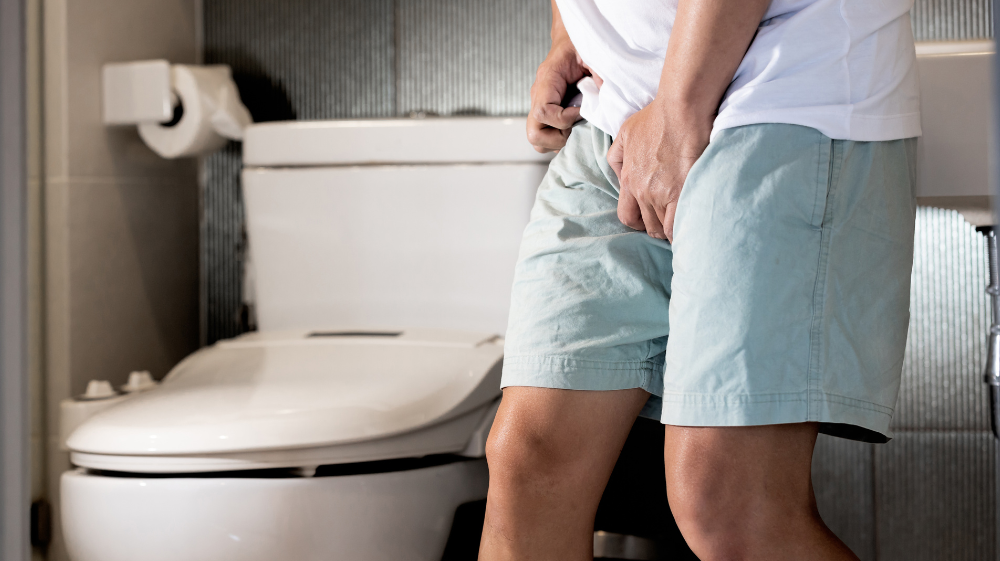Overactive Bladder
Move Better. Live Fuller. Your Wellness Journey Starts Here.
Schedule a FREE Discovery Call!
What Is Overactive Bladder (OAB)?
Overactive bladder is a condition that is characterized by a sudden, uncontrollable urge to relieve oneself—that often results in some leakage (known as urge incontinence). It can result in frequent trips to the restroom day or night, even when the bladder is not full.
Overactive bladder can significantly disrupt a person’s life, stopping them from engaging in events where the restroom situation is uncertain. For those who experience urge incontinence, it can be embarrassing and distressing to experience frequent leakage.

Main symptoms of OAB:
- Frequency: Using the restroom very often.
- Urgency: An intense need to urinate that is difficult to delay.
- Urge incontinence: Leakage as a result of not being able to hold urine.
- Nightly trips: Making more than two trips to the restroom per night.
Despite how society interprets bladder conditions, OAB is not normal, nor is it something you have to just “live with” or even get surgery for (in most cases). OAB is treatable and can be managed very well with pelvic floor physical therapy, in addition to other lifestyle recommendations from your doctor.
What Causes Overactive Bladder?
There are different causes for overactive bladder that vary from person to person, but let’s quickly talk about how the bladder works first: When your bladder fills with urine, your brain receives signals to let you know of the need to urinate. Your pelvic floor muscles help control the act of urination, and are what help hold the urine in the bladder until you are ready to void.
When you urinate, the pelvic floor relaxes and the bladder contracts to empty the urine. With overactive bladder, the bladder contracts involuntarily, causing a sudden and unexpected need to urinate—and in some cases, leakage occurs. This involuntary reaction can be caused by a variety of factors, such as the following:
- Pelvic Floor Dysfunction: As described above, the pelvic floor either contracts or relaxes in conjunction with the bladder to either hold or release urine. Urge incontinence can occur when the pelvic floor muscles are overactive, tight, short, and/or poorly coordinated. This can make it difficult for the body to understand whether the bladder is full or not, and may prevent effective contraction and relaxation of the bladder muscles.
- Bladder Irritants: Some dietary choices such as caffeine or alcohol can irritate the bladder. The bladder can also be affected by certain medications, most commonly increasing the frequency of urination.
- Neurological Conditions or Nerve Damage: Those who have experienced a stroke, Parkinson’s disease, multiple sclerosis, radiation therapy, or other sources of nerve damage may have bladder troubles.
- Aging: Aging often comes with cognitive decline, which can make it difficult for signals from the bladder to reach the brain.
Physical Therapy for Overactive Bladder
Pelvic floor physical therapy can be very useful in treating bladder problems, especially problems that involve pelvic floor dysfunction (which is more common than you may think). To address overactive bladder, your physical therapist will use a variety of techniques and treatments.
This can include biofeedback to help you gain better awareness and control of your pelvic floor, behavioral modifications to teach better bathroom habits, and much more. They can help you prevent leakage by teaching you about urge suppression, and prescribe you an exercise routine to help strengthen your pelvic floor. Or, for those who have an overtightened pelvic floor, they can teach effective relaxation methods.
Pelvic floor therapists can also provide pain-relieving treatments, as bladder conditions may cause pelvic pain for some individuals. Regardless of your needs, your pelvic floor physical therapist will be able to create a personalized care plan to help you regain function and control of your bladder. At Hive Therapy and Wellness, our physical therapists use many of the following treatments for patients experiencing overactive bladder:
- Neuromuscular re-education
- Manual therapy
- Exercise prescription
- Cupping
- Behavioral modifications
- Therapeutic activity
- Electrical stimulation
- Biofeedback
- Therapeutic modalities
Overactive bladder is a condition that is characterized by a sudden, uncontrollable urge to relieve oneself—that often results in some leakage (known as urge incontinence).
It can result in frequent trips to the restroom day or night, even when the bladder is not full.
Overactive bladder can significantly disrupt a person’s life, stopping them from engaging in events where the restroom situation is uncertain.
For those who experience urge incontinence, it can be embarrassing and distressing to experience frequent leakage.
Main symptoms of OAB:
- Frequency: Using the restroom very often.
- Urgency: An intense need to urinate that is difficult to delay.
- Urge incontinence: Leakage as a result of not being able to hold urine.
- Nightly trips: Making more than two trips to the restroom per night.
Despite how society interprets bladder conditions, OAB is not normal, nor is it something you have to just “live with” or even get surgery for (in most cases).
OAB is treatable and can be managed very well with pelvic floor physical therapy, in addition to other lifestyle recommendations from your doctor.
There are different causes for overactive bladder that vary from person to person, but let’s quickly talk about how the bladder works first:
When your bladder fills with urine, your brain receives signals to let you know of the need to urinate. Your pelvic floor muscles help control the act of urination, and are what help hold the urine in the bladder until you are ready to void.
When you urinate, the pelvic floor relaxes and the bladder contracts to empty the urine.
With overactive bladder, the bladder contracts involuntarily, causing a sudden and unexpected need to urinate—and in some cases, leakage occurs. This involuntary reaction can be caused by a variety of factors, such as the following:
- Pelvic Floor Dysfunction: As described above, the pelvic floor either contracts or relaxes in conjunction with the bladder to either hold or release urine. Urge incontinence can occur when the pelvic floor muscles are overactive, tight, short, and/or poorly coordinated. This can make it difficult for the body to understand whether the bladder is full or not, and may prevent effective contraction and relaxation of the bladder muscles.
- Bladder Irritants: Some dietary choices such as caffeine or alcohol can irritate the bladder. The bladder can also be affected by certain medications, most commonly increasing the frequency of urination.
- Neurological Conditions or Nerve Damage: Those who have experienced a stroke, Parkinson’s disease, multiple sclerosis, radiation therapy, or other sources of nerve damage may have bladder troubles.
- Aging: Aging often comes with cognitive decline, which can make it difficult for signals from the bladder to reach the brain.
Pelvic floor physical therapy can be very useful in treating bladder problems, especially problems that involve pelvic floor dysfunction (which is more common than you may think).
To address overactive bladder, your physical therapist will use a variety of techniques and treatments.
This can include biofeedback to help you gain better awareness and control of your pelvic floor, behavioral modifications to teach better bathroom habits, and much more.
They can help you prevent leakage by teaching you about urge suppression, and prescribe you an exercise routine to help strengthen your pelvic floor. Or, for those who have an overtightened pelvic floor, they can teach effective relaxation methods.
Pelvic floor therapists can also provide pain-relieving treatments, as bladder conditions may cause pelvic pain for some individuals.
Regardless of your needs, your pelvic floor physical therapist will be able to create a personalized care plan to help you regain function and control of your bladder.
At Hive Therapy and Wellness, our physical therapists use many of the following treatments for patients experiencing overactive bladder:
- Neuromuscular re-education
- Manual therapy
- Exercise prescription
- Cupping
- Behavioral modifications
- Therapeutic activity
- Electrical stimulation
- Biofeedback
- Therapeutic modalities
You can learn more about these treatments on our Treatments Page.





